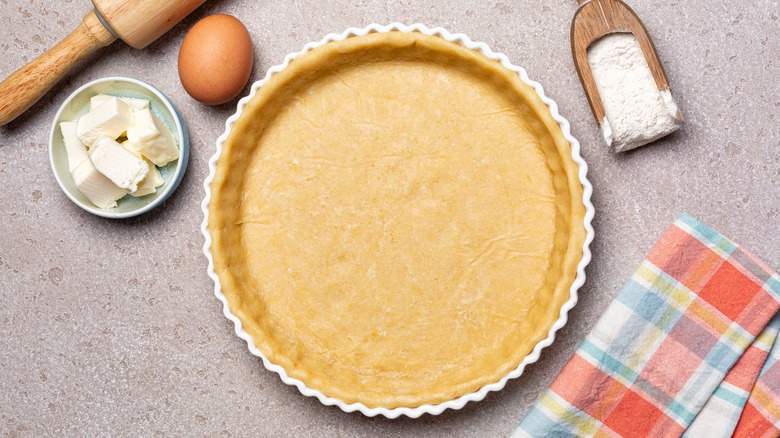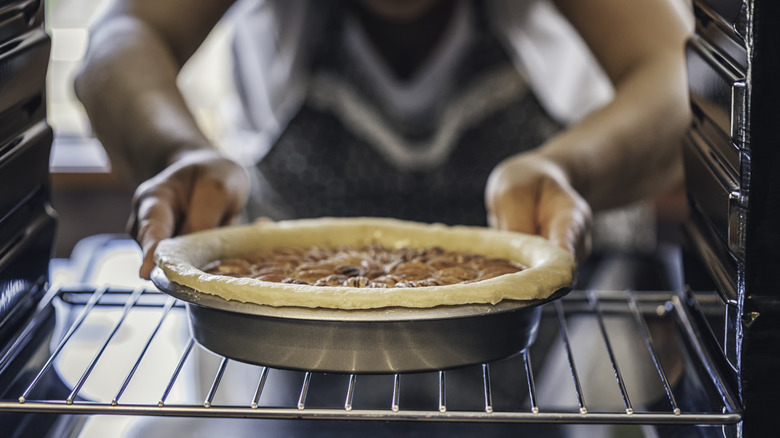How To Decide Whether To Blind Bake Or Par-Bake Your Pie Crust
We may receive a commission on purchases made from links.
While most pie crusts are similar in shape, there's quite a bit of variance in composition. Some pies have nut or coconut crusts, some have cookie crumb crusts, while others have crusts made from saltines. Pastry crusts are also sometimes made with lard, butter, or shortening. The search for the perfect pie crust continues on.
If you're making a pie with a custard or cream filling that doesn't need much (if any) oven time, you may need to blind bake the crust. "Blind baked crusts," explains "Black Girl Baking" author Jerrelle Guy (who also runs Chocolate For Basil, which you can find on Instagram), "are crusts that get their fillings added after the crust has already been fully baked." These crusts can be cooked at a high temperature for a shorter amount of time if you don't want them too dry. But Guy also tells us, "Low and slow is nice, especially for cream pie crusts or ones I plan to keep in the refrigerator since the crust will absorb more water as it chills."
When you have a wet filling that does require baking, like the one in a pumpkin pie, you'll need to use a technique called par-baking. Par-baking is a type of blind baking in which the crust stays in the oven for a shorter amount of time so it's only partially cooked. That way, Guy says, "The filling doesn't make the crust too soggy and the time in the oven needed to fully cook the filling won't over-bake the crust."
How do you keep the crust from getting soggy if you don't blind bake it?
Many pie recipes, particularly fruit ones, call for baking the crust and the filling together. Without the initial blind bake (whether full or partial) how can you prevent the bottom crust from getting waterlogged from prolonged contact with a moist filling? Jerrelle Guy says that sometimes she will cook the fruit filling first so as to evaporate some of the moisture.
If you prefer to have your fruit retain more of its texture, you can also mix it with sugar and let it sit in a colander for a few hours. The sugar will draw out the moisture, while the colander lets the liquid drain before the filling goes into the crust. If you don't want to discard the juice, cook it down into a syrup or thicken it with cornstarch or flour before pouring it back into the pie.
Guy also has a few tricks she likes to use that protect the crust itself. One of these is to employ a layer of cookie crumbs as an edible barrier between the filling and the crust. Another is to put the pie pan on a dark metal baking sheet and move it to the lowest shelf of the oven. That way, the bottom of the pie will get more heat, which speeds up the cooking process before the liquid has time to penetrate it.

